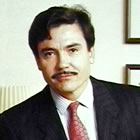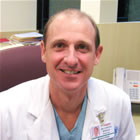 What does a Denial of Service Attack have to do with stents, angioplasty and PCI?
What does a Denial of Service Attack have to do with stents, angioplasty and PCI?
In the world of computing, a DOS attack is defined as “an attempt to make a machine or network resource unavailable to its intended users.” Typically netbots programmed by hackers overwhelm the web servers of banks, credit card providers, etc. whose sites then become unavailable to their customers. Now it seems similarly that in New York State, cardiovascular treatments may become unavailable to some Medicaid patients: a denial of service. Continue reading



 On the occasion of the 20th anniversary of transradial intervention (TRI), I talked with Dr. Ferdinand Kiemeneij, “the father of transradial intervention” who practices interventional cardiology at
On the occasion of the 20th anniversary of transradial intervention (TRI), I talked with Dr. Ferdinand Kiemeneij, “the father of transradial intervention” who practices interventional cardiology at 



